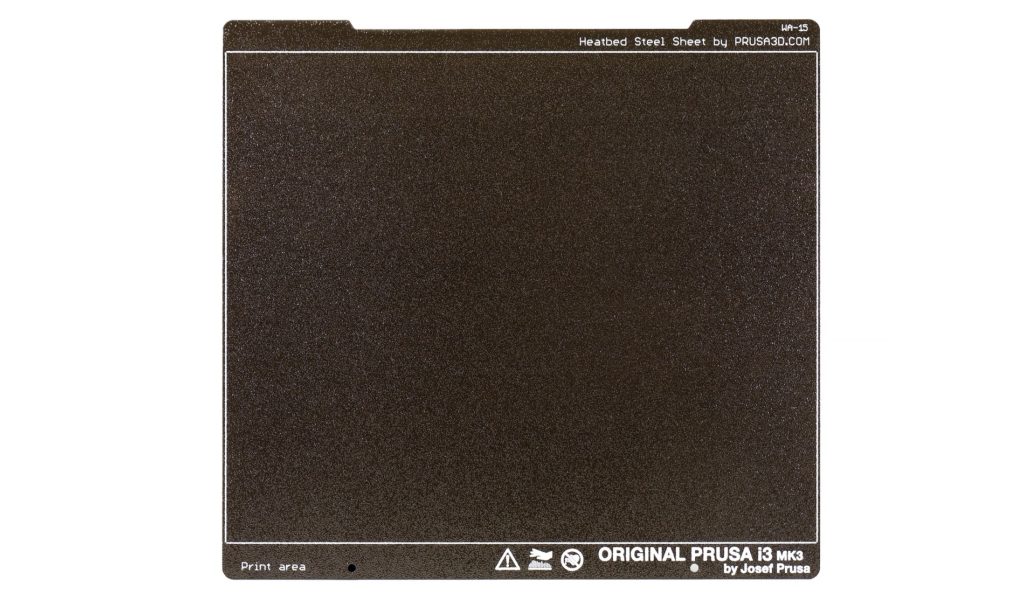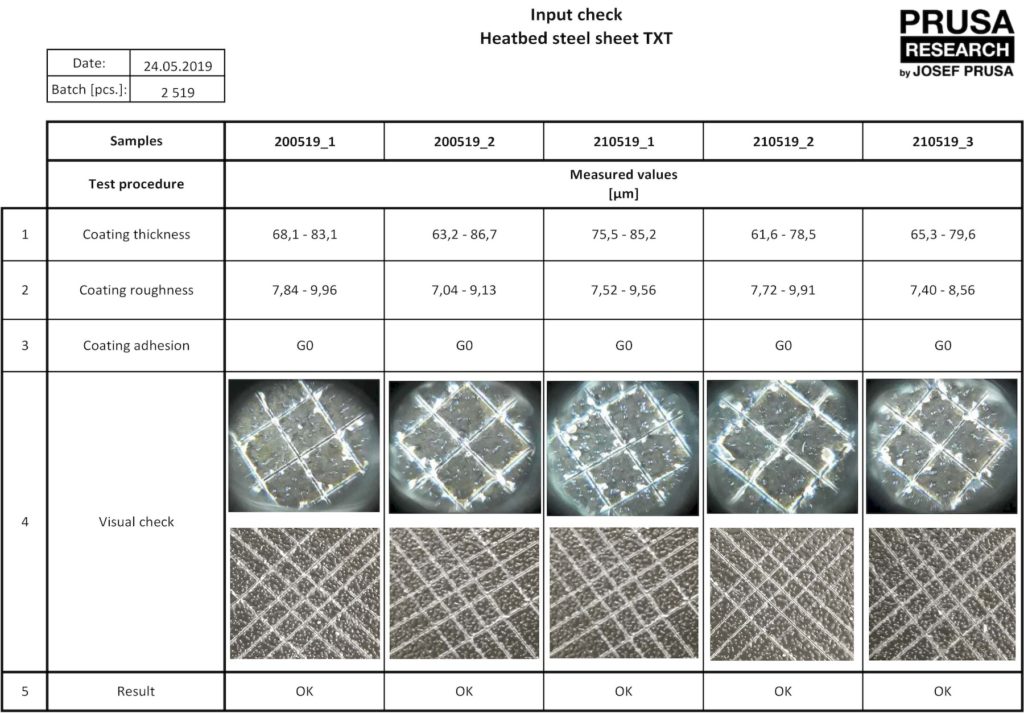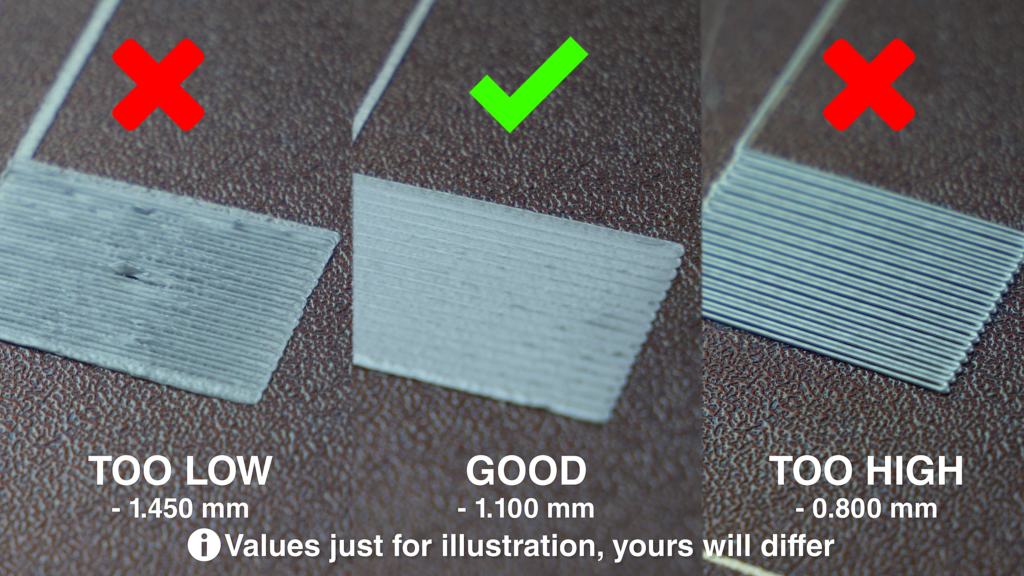You may have heard about the powder-coated sheets before – and no wonder! They are incredibly popular, we’ve sent over 18,000 of them to our customers and the demand is still huge. Today, we’ll take a close look at what makes these sheets unique and what are the differences compared to standard smooth sheets. Also, we’ll share information about how we test them and above all: we’ll share in-depth instructions on how to properly take care of your powder-coated sheet to ensure it stays in a good shape for a long time.
Stock availability
We have been regularly informing our customers about the status of powder-coated sheets for many months. The main problem was that we’ve run into issues with production quality – it was (and still is!) incredibly difficult to produce these sheets in good quality and high quantity. We decided to keep improving and adjusting the manufacturing process until we would get everything right. Everything seems to be on the right track now and the situation is finally looking stable. We’re adding small batches of powder-coated sheets in our e-shop’s stock every day. So in case, you saw an “Out of Stock” text, please try again in a couple of hours. We’re planning to enable MK3S/MK2.5S bundles with powder-coated sheets in the upcoming weeks. To see the sheets in the e-shop, you must log in with your e-mail account that was used to purchase your 3D printer.
UPDATE: From now on, we have a stable supply of powder-coated sheets and our warehouse is fully stocked. You can also order your Original Prusa i3 MK3S kit or the assembled printer with the powder-coated sheet.
Powder-coated sheet characteristics
Our powder-coated sheets allow you to print with all the commonly used types of filament (PLA, PETG, ABS, FLEX, CPE, etc.) without applying adhesive/separation layers. The surface of the sheet is covered with a special polymer (Ultem), which enables all the previously mentioned materials to adhere to the print surface properly. Obviously, the biggest feature is the textured surface – the extruded plastic will fill the tiny gaps in the texture and the result will be a slightly rough first layer. This helps to hide the filament “tracks”, creating a nice uniform surface. You can inspect the printed parts of your Original Prusa i3 3D printer for reference. Another great thing is the fact that prints are easy to remove after the sheet has cooled down – keep that in mind and don’t try to forcefully remove the object when the sheet is still hot. Some models will separate from the sheet automatically, others can be removed by merely bending the sheet, without using a spatula or similar tools. It is also very difficult to create scratches on the surface thanks to its durability.
Quality guaranteed
We make sure that the manufactured sheets conform to our standards. All printer sheet deliveries undergo several inspections:
Every delivery from our supplier has several batches (one batch equals one furnace output of 200 units). We take one sheet from every batch for the initial inspection (see the spreadsheet). We compare our results with the supplier who makes the same check before shipping. Next, we take 2 sheets for testing. We run 15 prints with PETG, PLA, ABS, CPE, and FLEX to test them in a real scenario.
The whole process includes receiving the sheets without the printed markings (with phosphate and Ultem). We check them all visually, then we send them for silk-screen printing and after that, we visually check 100% of all the parts again. Therefore the visual check is performed twice. Just to be clear – we focus especially on the printing area of the sheet. If we find a minor defect outside the printing area, the sheet is fine and there is no reason to throw it out.
Print surface preparation
Do not apply any adhesive or separation layers on powder-coated sheets. All you need for a successful print is just a little bit of isopropyl alcohol (IPA) 90%+ as a degreaser (do not use Acetone! – see the explanation below). Apply IPA on a paper towel and clean the cold surface with it. If your print surface is hot, IPA will evaporate quickly and you won’t be able to clean the surface perfectly.
Calibration of the first layer
Do not forget that powder-coated sheets have a different thickness than smooth PEI sheets, therefore it is required to do the First layer calibration. Please note, that the improper adjustment of the first layer height can lead to damage of the sheet’s surface. This type of damage is not covered by your warranty!
While it’s true that it’s necessary to lower the nozzle more (compared to the smooth PEI sheet), it is important not to overdo it. The extruded filament should completely fill all gaps of the print surface while remaining smooth and flat on the top during the print of the first layer. If you set the nozzle too high, your object will not stick to the surface. If you set the nozzle too low, the extruded filament will either stick to the nozzle and peel off from the surface or (in the worst case scenario) you might damage your sheet.
My prints still don’t stick to the surface – what should I do?
If your print surface is perfectly clean, degreased with isopropyl alcohol and the first layer height is set up properly, your prints should (with only a few exceptions) stick to the plate very well. Small parts (especially printed from PLA) can detach due to a small contact area. In these cases, it’s better to use a smooth sheet that will ensure perfect adhesion. If you want to print small parts on a powder-coated sheet anyway, it is recommended to use a brim. The Brim function can be found in PrusaSlicer in the right panel, nex to infill density or under the tab Print settings – Skirt and Brim – Brim. Set the brim to at least 3 mm for better adhesion.
Do not use solvents other than IPA under any circumstances!
Acetone, in particular, must not be used on the powder-coated sheet! Using acetone makes the surface (Ultem) crack, and eventually, it peels off. Also, the powder-coated sheet is not waterproof. When exposed to high humidity, it corrodes and loses its properties. Therefore, do not clean the sheet with water. It is possible to do that only if you have truly tried everything mentioned and your objects still don’t stick to the surface. It could mean that you have sugar-based compounds on your sheet that can’t be dissolved with IPA.
Do:
[icon name=”check” class=”” unprefixed_class=””] Degrease the sheet with isopropyl alcohol (IPA) 90%+
[icon name=”check” class=”” unprefixed_class=””] Print without any adhesive or separation layers
[icon name=”check” class=”” unprefixed_class=””] Print standard materials (PETG, PLA, ABS, CPE, FLEX, etc.)
[icon name=”check” class=”” unprefixed_class=””] Remove prints after the cooldown
[icon name=”check” class=”” unprefixed_class=””] Bend the sheet to remove printed objects
Don’t:
[icon name=”times” class=”” unprefixed_class=””] Use acetone and other agents
[icon name=”times” class=”” unprefixed_class=””] Print with adhesive or separation layers
[icon name=”times” class=”” unprefixed_class=””] Wash the sheet with water
[icon name=”times” class=”” unprefixed_class=””] Remove printed objects before cooldown
[icon name=”times” class=”” unprefixed_class=””] Use any instruments (spatula) to remove the printed object
Powder-coated sheets are a very good choice for printing all standard types of materials, without using additional adhesive layers. If you treat them properly, they will last for quite a long time. However, it is important to realize that it’s a consumable and the sheet can degrade through continuous use and lose some of its qualities.
Both these sheets have their own advantages – the powder-coated sheet will give your printed objects a really nice surface finish, while small parts printed from PLA might stick better to the smooth PEI sheet. Don’t forget that if you print with PETG on the smooth PEI sheet, you should clean it with Windex and not IPA, otherwise the print could stick too much to it. The best case scenario is, of course, if you own both sheets. Then you can simply switch between them depending on your current needs.
If you already have your powder-coated sheet, we’d love to hear your opinion and see your prints!










コメントを投稿するにはログインしてください。